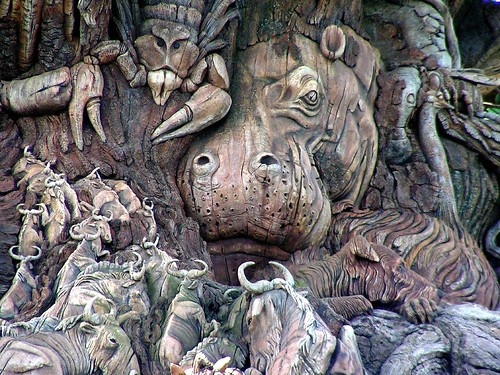"Slave to no sect, who takes no private road, But looks through Nature up to Nature's God."- Alexander Pope

Monday 31 October 2011
Minerals, Rocks & Fossils
VARISCITE Stone
" Life on earth is shaped by the rocks that lie beneath out feet. Made of different combinations of minerals, they have a far-reaching influence on the landscape, on vegetation, and on the soil. Preserved within these rocks, fossils from a highly detailed record of life in the distant past, showing the path that evolution has followed over hundreds of millions of years. "
From: The natural history book
Evolution
Like all living things, animals undergo changes as each new generation succeeds the one before. These changes are usually so slight that they are very difficult to see, but over thousands or millions of years, they can completely alter the way animals look and also the way they behave. This process of change is called evolution. It allows animals to exploit new opportunities and to adapt to changes that take place in the world around them. Evolution works by modifying existing characteristics, usually through a series of extremely small mutations. The result of this is that every animals is a living store of evolutionary history- one that helps to show how sufferer species are related
From: Animals
From: Animals
Classification " Taxonomy "
Nearly 2 million kinds of animals have been identified by scientists, and thousands more are discovered every year. The real total may be 10 times this number, which means that the task of locating and identifying all the world's animals will never be complete.
To make sense of this bewildering diversity, biologists use classification - a system that works like a gigantic filling system of all the past and present life on our planet.
In classification, the entire living world is divided into groups, known as Taxa. Each type of animals is given a unique scientific name, and is placed with it's closest relatives, reflecting the path that evolution is thought to have followed.
The study of classification, known as taxonomy, has rules for the way scientific names are devised and used. Each species ha a genus name and a specific name by which it can be identified.
In the 18th century, a botanist named Carl Linneas (1707 - 1778) laid the foundations of modern classification.
In the classification, the species level is the basic starting point .
Classification:
KINGDOM
PHYLUM
CLASS
ORDER
FAMILY
GENUS
SPECIES
From: Animals
To make sense of this bewildering diversity, biologists use classification - a system that works like a gigantic filling system of all the past and present life on our planet.
In classification, the entire living world is divided into groups, known as Taxa. Each type of animals is given a unique scientific name, and is placed with it's closest relatives, reflecting the path that evolution is thought to have followed.
The study of classification, known as taxonomy, has rules for the way scientific names are devised and used. Each species ha a genus name and a specific name by which it can be identified.
In the 18th century, a botanist named Carl Linneas (1707 - 1778) laid the foundations of modern classification.
In the classification, the species level is the basic starting point .
Classification:
KINGDOM
PHYLUM
CLASS
ORDER
FAMILY
GENUS
SPECIES
From: Animals
Sunday 30 October 2011
Biogeography " Continental drift"
The present-day distribution of animals is the combines result of many factors. Among them are continental drift and volcanic activity, which constantly reshape the surface of the earth. By splitting up groups of animals, and creating completely new habitats, these geological processes have had a profound impact on animal life. One of the most important effects can be seen on remote islands, such as Australia and Madagascar, which have been isolated from the rest of the world for millions of years. Until humans arrived, their land-based animals lived in total seclusion, unaffected by competitors from outside.
The result is a whole range of indigenous species, such as kangaroos and lemurs, which are found nowhere outside their native homes.
Animals are separated when continents drift apart, and they are brought together when they collide. The distribution of animals is evidence of such events long after they occur.
From: Animals book
The result is a whole range of indigenous species, such as kangaroos and lemurs, which are found nowhere outside their native homes.
Animals are separated when continents drift apart, and they are brought together when they collide. The distribution of animals is evidence of such events long after they occur.
From: Animals book
Kingdoms of Life.
Biologists classify all living things into overall groups, called kingdoms. The members of each kingdom are alike in fundamental ways, such as in the nature of their cells or in the way they obtain energy. In the most widely used system of classification there are 6 kingdoms, of which the Animal kingdom is the largest. In recent years, a new classification system has been proposed. In this, there are 3 "SuperKingdoms": Archaebacteria, Eubacteria and Eukaryota. The first and second reflect chemical and physical differences within bacteria. The third contains the living things that, unlike bacteria, have complex cells: Protoctists, Fungi , Plants and Animals.
The most widely used system of classification contains the 6 kingdoms of:
Animals, Plants, Fungi, Protoctists, Bacteria, Archaea .
From: Animals
What are animals?
With almost 2 million species identified to date,and even more than that awaiting discovery,animals are the most varied living things on the planet.
For over a billion years, they have adapted to the changing world around them, developing a vast array of different lifestyles in the struggle to survive.
At one extreme, animals include fast-moving predators, such as sharks, big cats, and birds of prey; at the other, there are the inconspicuous sorters and sifters of the animal world leftovers, living unseen in the soil or on the deep-sea bed. Together, they make up the animal kingdom - a vast collection of living things that are linked by a shared biology and that occupy a dominant place in life on earth.
From the book: Animals
Monday 24 October 2011
Right Brain/ Left Brain functions
This illustration in a Mercedes Benz ad (of all things) really nailed the right-brain/ left-brain functions in this visually exciting illustration! The ad copy reads:
(Left:) "I am the left brain. I am a scientist. A mathematician. I love the familiar. I categorize. I am accurate. Linear. Analytical. Strategic. I am practical. Always in control. A master of words and language. Realistic. I calculate equations and play with numbers. I am order. I am logic. I know exactly who I am."
(Right:) "I am the right brain. I am CREATIVITY. A free spirit. I am passion. Yearning. Sensuality. I am the sound of roaring laughter. I am taste. The feeling of sand beneath bare feet. I am movement. Vivid colors. I am the urge to paint on an empty canvas. I am boundless imagination. Art. Poetry. I sense. I feel. I am everything I wanted to be."
source: TED
Subscribe to:
Posts (Atom)







